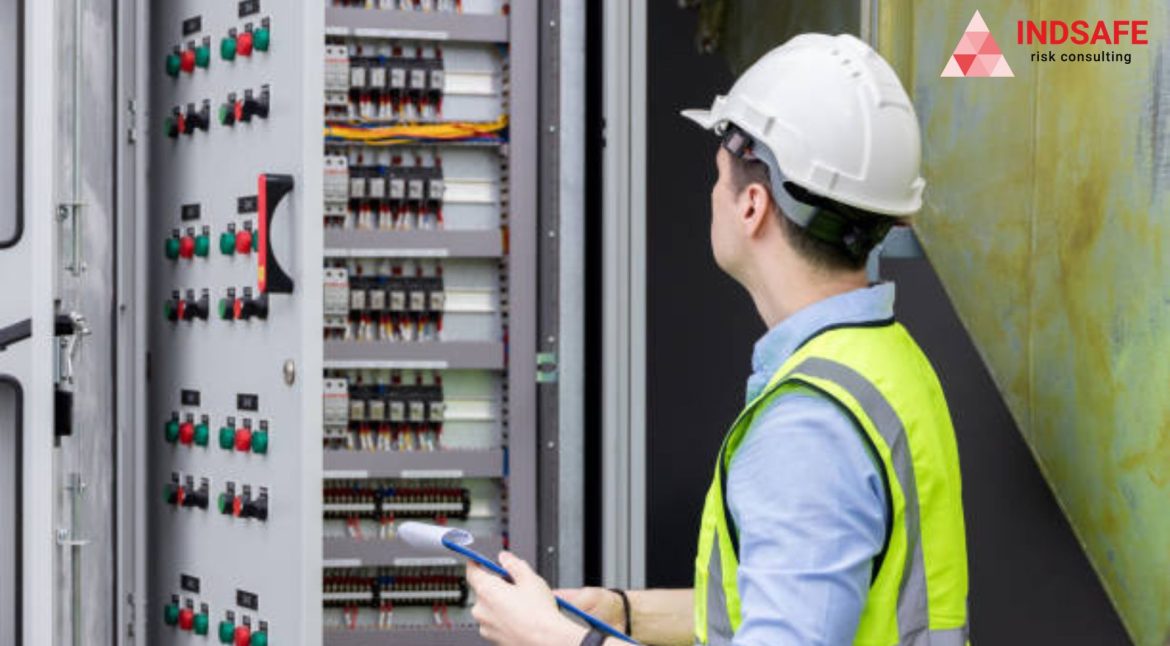In industrial environments, safety is not just a regulatory requirement—it’s a crucial aspect of operational excellence. From managing electrical systems to safeguarding workers at elevated locations, various assessments and studies play an essential role in reducing risks. Among these, Relay Coordination Study, Arc Flash Study, and Work at Height Safety are vital components of a comprehensive safety strategy.
What is a Relay Coordination Study and Why is it Important?
A Relay Coordination Study is an engineering analysis that ensures all protective devices in an electrical power system operate in a coordinated manner. Its primary objective is to isolate faults quickly and selectively, minimizing the impact on other parts of the system.
Key Benefits of a Relay Coordination Study:
-
System Reliability: Proper coordination prevents unnecessary shutdowns of healthy parts of the system.
-
Minimized Downtime: Quick fault isolation ensures faster restoration of power and reduced operational disruption.
-
Enhanced Equipment Protection: Prevents cascading damage to transformers, circuit breakers, and motors.
-
Safety of Personnel: Timely clearing of electrical faults reduces risks of electrocution and fires.
In industries with complex electrical networks—such as oil & gas, manufacturing, or data centers—a well-executed Relay Coordination Study ensures operational continuity and safety. Engineers use software tools like ETAP or SKM PowerTools to simulate fault scenarios and set optimal time-current characteristics (TCCs) for protective relays.
Arc Flash Study: Understanding the Hazard
An Arc Flash Study is conducted to evaluate the risk associated with electrical arcs that release intense energy during short circuits. An arc flash can result in temperatures exceeding 35,000°F, capable of vaporizing metal and causing severe injuries or fatalities.
Why is Arc Flash Analysis Critical?
-
Protects Workers: Identifies high-risk areas and provides recommendations for appropriate personal protective equipment (PPE).
-
Complies with Standards: Meets requirements of NFPA 70E, OSHA, and IEEE 1584.
-
Improves Safety Protocols: Helps develop safe work practices and labeling of electrical panels.
-
Lowers Liability: Demonstrates proactive safety management in case of audits or incidents.
Arc Flash Studies typically involve calculating incident energy levels, arc flash boundaries, and recommended PPE levels for various equipment. Implementing the findings ensures personnel are protected during maintenance and troubleshooting of energized equipment.
How Arc Flash and Relay Coordination Work Together
Although separate, Relay Coordination Study and Arc Flash Study are often conducted together. Relay settings directly influence arc flash energy levels. Optimally coordinated relays minimize fault duration, thereby reducing arc flash hazards. Integrating both studies delivers a holistic approach to electrical safety.
Work at Height Safety: Addressing Fall Hazards
Apart from electrical hazards, work at height safety is another critical area of concern in industrial and construction environments. Falls from heights remain one of the leading causes of workplace injuries and fatalities globally.
Key Elements of Work at Height Safety:
-
Risk Assessment: Identifying potential hazards associated with scaffolds, ladders, roofs, and elevated platforms.
-
Use of Proper Equipment: Harnesses, lifelines, guardrails, and safety nets are essential to prevent falls.
-
Training and Competence: Workers must be trained to use equipment correctly and understand safety procedures.
-
Inspection and Maintenance: Regular checks of personal protective equipment (PPE) and access tools ensure they are safe for use.
According to OSHA, any work conducted at a height of 4 feet or more in general industry (or 6 feet in construction) requires fall protection. Ensuring work at height safety not only protects lives but also prevents legal and financial consequences for companies.
Creating a Culture of Safety
Integrating Relay Coordination Study, Arc Flash Study, and Work at Height Safety into your organization’s EHS (Environment, Health, and Safety) framework fosters a safety-first culture. Here’s how companies can benefit:
-
Proactive Risk Management: Identifying and mitigating hazards before incidents occur.
-
Regulatory Compliance: Meeting local and international safety standards and avoiding penalties.
-
Employee Confidence: Workers feel safer and more valued, leading to higher productivity and morale.
-
Brand Reputation: Demonstrating commitment to safety enhances the company’s image and trustworthiness.
Final Thoughts
Safety should never be an afterthought. With the complexity of modern industrial operations, conducting a Relay Coordination Study and an Arc Flash Study, along with enforcing robust work at height safety practices, is essential. These efforts not only ensure compliance but also safeguard human life and valuable assets.
Partnering with experienced EHS consultants, such as those at INDSAFE, can provide expert guidance, accurate assessments, and effective solutions tailored to your operational needs.


